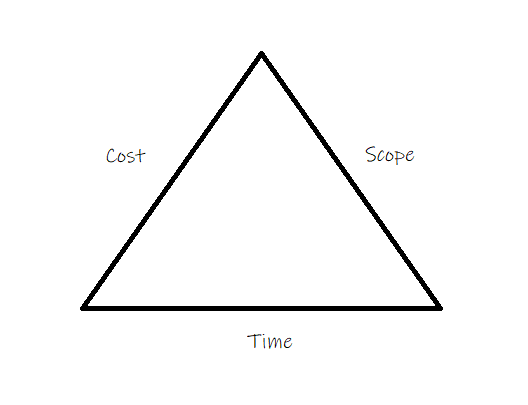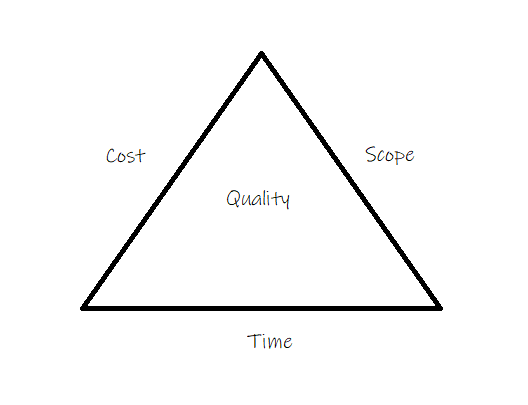We’ve talked about how a little empathy can improve communication through understanding the perspective of another person. I’m going to encourage you to apply this sentiment to your project manager. Yep, your project manager. By understanding a bit of the terminology and the why behind the requests, we can reduce a lot of stress for everyone. And, you may end up helping to build a better team and product in the process.
The Language of Projects
Projects vs. Ongoing Work/Operations
“A project is a temporary endeavor undertaken to create a unique product, service, or result.”
A Guide to the Project Management Body of Knowledge (PMBOK Guide) Fifth Edition, 2013, p. 3
Breaking this down, a project is temporary. That is, projects have a start and an end. Projects also create something that hasn’t been created before. This can be a physical product, but it doesn’t have to be. For example, a person or team may be asked to research design options, where the result is a report of the design options. This can be a project.
Ongoing work which we often call operations, follows existing processes and does not result in unique products, services, or results. By its very definition, ongoing work is ongoing, not temporary. There are different considerations for projects vs. operations. In this article we’ll be looking into projects, not operations.
Stakeholders
Anyone who is actively working on a project, or may be impacted by a project, is a stakeholder. Examples of stakeholders within an organization are the engineers and developers on the team, engineering managers, product managers, technical writers, training, manufacturing, field service, customer service, sales, and marketing. Stakeholders outside the organization may be customers, distributors, shareholders, and investors, to name a few.
Effort vs. Duration
The amount of effort a task will take can be thought of this way: if you could work on this 100%, how long would it take to complete? Duration is the calendar time required to complete the task. Here’s an example: I have a task and I estimate the effort at 20 hours. Let’s say it’s possible for you to work straight for 8 hours per day (which is unlikely but roll with me here). The effort would be 2.5 days. Now let’s say that you aren’t able to work 8 hours/day, but only 4 hours/day. The duration becomes 5 days, but the effort remains at 20 hours.
Learning the difference between effort and duration might be the most important thing you can learn to make your relationship better with your project manager. They should be using the terms very carefully, and it’s important (to them) to make sure they have the right numbers for each.
Triple Constraint
Project managers are asked to put together a projection of how long the project will take (schedule). This means they need to know what’s going to be included and excluded (scope), how many people and how much material they will need to get the project done (resources).
These three items, time (schedule), cost (resources), and scope form the three constraints that project managers must juggle. We visualize this as a triangle:

Sometimes we emphasize that quality plays an important part, and is affected by changes in any of the three constraints:

Want your project done faster? To decrease time, you need to increase cost (i.e. add more people), and/or decrease scope (do less stuff). To reduce the cost, you need to decrease time and/or scope (doing less in less time should cost you less). Want to add scope? (If the project scope was previously agreed to, then additional scope is called scope creep.) To add scope, we must increase the time and/or increase the cost.
These are the constraints project managers grapple with continuously. There is usually a desire of management to get more done with less and in record time, which doesn’t fit well with the triple constraint model. Project managers also need to keep an eye on quality, in order to deliver the project with a level of known quality that is satisfactory to the stakeholders. Any adjustment in the constraints of scope, cost or time can positively or negatively affect quality.
Why project managers are always asking for estimates
I get it. You get tired of providing estimates all the time. The reason project managers ask for estimates is because they are being asked to generate a prediction of when the project can finish, what the scope of the unique product, service, or result will be, and how much it will cost. The executives need to make decisions on which projects to move forward with and which not to. If estimates come in very high but sales projections very low, this might not be a good project to spend money on. Or, if the estimates are high, a project manager may be asked to go back to the team for new estimates based on different scope, or a different approach. Many “what-if” scenarios may be generated in order to decide which path is right for the organization to take.
tl;dr
Effort is the time a task will take if you have 100% of your time to work on it. Duration is the calendar time that the task will occur over. Effort and duration are usually not the same because it isn’t often we can focus on a task 100%. Scope, time, and cost are called the triple constraints and must be juggled by project managers in order to deliver something of value and acceptable to the stakeholders.
engineer your life
Give your project manager a hug. (Totally kidding! They probably won’t like that any more than you would.)
If your project manager uses a term that you think might have a specific meaning in project management, ask them about it. They will likely be happy someone wants to be clear on the terminology.
